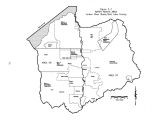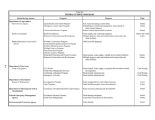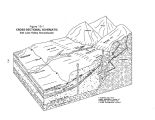| OCR Text |
Show SECTION 6 STATE WATER PLAN - JORDAN RIVER BASIN MANAGEMENT Management is the responsibility for control, augmentation and use of a water supply, including storage, diversion, distribution and treatment. 6.1 Introduction This section describes the existing water management systems for irrigation, municipal, industrial and waterfowl use. Management organizations are listed and general recommendations are made. Management for water quality, fisheries, conservation and groundwater use are covered in other sections of this report. Local management of water supplies throughout the Jordan River Basin consists of a complex mix of cities, towns, irrigation companies and water conservancy districts. 6.2 Setting To a large extent, the flow of the Jordan River is controlled at the point of outflow from Utah Lake. Also, a number of small reservoirs on tributary streams along the Wasatch Front add a limited management impact upon their outflow. For the most part, however, the flow regimes within the Jordan River Basin are natural. Manv of the Jordan River's tributary mountain streams tend to be intermittent ( and in many instances ephemeral, particularly on the west side of the valley) with flows ranging during the course of the year from zero to bank- full. Although much of the flow from Wasatch Range streams is diverted for municipal and industrial use, peak flows from Little Cottonwood Creek, Big Cottonwood Creek, Mill Creek, Emigration Creek, and City Creek can be, and have been in recent years, a substantial flooding threat to Salt Lake Valley communities. The Jordan River Basin has 10 active reservoirs. But they are relatively small and located high in the Wasatch Range. Their primary function is culinary water supply storage, so their size and location preclude their use as flood control or flow management facilities. Table 6- 1 lists the active reservoirs and pertinent data. Red Butte reservoir is included, although it is currently inactive. 6.3 Management Entities and Systems Department of Natural Resources Building in Salt Lake City 6.3.1 Water Quality/ Flood Control Management The overall management of water in the entire Jordan River Basin is a very complex issue requiring the integration of municipal, industrial, agricultural and recreational needs as well as fish and wildlife issues. One of the biggest problems in the Jordan River Basin is the many competing values and interested parties, but no one controlling body or agency. Recognizing the need for increased communication and cooperation among the many federal, state and local governmental agencies and to promote efficient planning, implementation, and coordination of management and regulatory activities, the Salt Lake County Board of Commissioners created an 6- 1 |

















































































































































































